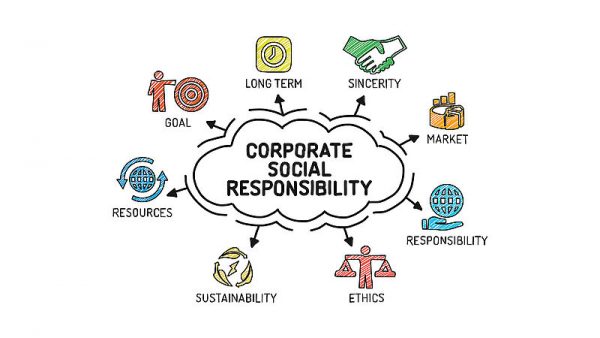It’s the New Year, that time when many business owners make a fresh resolve to develop their business. For some, that means updating equipment and driving sales. But others will focus on something more personal and possibly more pivotal: developing their leaders.
GF Data shows that a solid management team will increase the valuation multiple. For smaller businesses, the quality of your management team can be an even bigger factor, influencing whether your business sells at all.
Here are five ways to develop your managers and bring out their best:
1. Coach, Don’t Rescue
A lot of leaders are “rescuers.” We care about our people and we want to see them succeed. But instead of onboarding correctly or coaching, we take over for them every time they have a problem.
Try coaching your team member to a solution. Help them find the courage to voice their own suggestions.
Questions like, “What do you think you should do?” often yield “I don’t know” answers. But a simple reframing can take the pressure off and encourage people to share their own thinking. If you’re trying to get someone past “I don’t know,” try one of these approaches:
“Suppose you did know. What’s a possible answer?”
“What if you knew you couldn’t fail?”
“Who’s the smartest person you know? What do you think they would do?”
Getting people to reframe the answer from someone else’s perspective can take away some of the discomfort we all feel about being wrong. What’s more, it helps them stretch and develop their own capabilities and confidence.
2. Set a No-Penalty Zone
Create an environment where it’s okay for people to make mistakes. Begin by setting boundaries (wide boundaries, preferably) around decisions and actions they can take on their own. As long as people are acting ethically and in adherence to your corporate values, support the choices they make.
You can always coach people and explain why you would have made a different decision, but don’t impose any negative consequences. It’s better to have a proactive team than people who sit in a state of paralysis waiting for you to sign off on a course of action.
3. Assess Your Team
Behavioral assessments can go a long way toward employee retention and development. From MBTI to DiSC, Strengths Finder, and others, tools like these can help your team identify their unique gifts and areas for improvement.
Invest in a business psychologist or other professional facilitator to take your team through the assessment. With the right guidance, the results can help improve team dynamics and equip you to be a better coach to each individual on your team.
4. Give them a Voice
Give people a place at the table. For a long time, I made the vast majority of my business decisions based on what I thought was best for the company. But over the last few years, I’ve gotten better at listening to my internal team.
My management team has helped me challenge my assumptions, develop new initiatives, and most critically for me, stay the course on a promising business plan instead of following my next big idea.
5. Get Out
We’re working with a husband and wife team who haven’t taken a vacation in five years. That’s not great on many levels. I don’t know if they haven’t developed their people or if the issue is more about an emotional, personal need for control.
If that sounds familiar, start slow. Take a long weekend away. Leave early on Fridays. Build up your ability to step away. As you leave your team in charge, their confidence will grow, and so will yours.
In terms of value, the ideal goal is to work yourself out of the business. Get yourself to a place where you can take extended vacations. Transition your role from working IN the business to working ON the business.
Buyers want businesses with transferable value. That means you need a leadership team that can sustain operations and, better yet, drive growth, without your direct involvement. If the business can’t survive without you, its value declines.
At the end of the day, building out your management team is a critical investment in your business. If it makes your life easier in the process (and it will), that’s just a nice side bonus.
For further information on what buyers look for in a management team, contact Al Statz at 707-781-8580 or alstatz@exitstrategiesgroup.com.






 There’s no shortage of information out there right now on how company owners and CEO’s are responding to COVID-19. [By now, leaders have taken steps to survive and fight another day. Most now understand what business will look like for them until restrictions are lifted, and they’re formulating plans to thrive again post-pandemic.] With few companies going to market during this crisis, our insights will focus on exit planning, acquisition opportunities and non-elective sales for a while.
There’s no shortage of information out there right now on how company owners and CEO’s are responding to COVID-19. [By now, leaders have taken steps to survive and fight another day. Most now understand what business will look like for them until restrictions are lifted, and they’re formulating plans to thrive again post-pandemic.] With few companies going to market during this crisis, our insights will focus on exit planning, acquisition opportunities and non-elective sales for a while.
 It was time. After 30 years running their small 25-employee company, Frank and Martha were ready to retire to the Oregon Coast. To their surprise, after a 12-month listing with a business broker, there were just a few interested parties and no offers. Instead of enjoying retirement, Frank and Martha are now a year older and no closer to retirement. For them, preparing to sell was an after-thought.
It was time. After 30 years running their small 25-employee company, Frank and Martha were ready to retire to the Oregon Coast. To their surprise, after a 12-month listing with a business broker, there were just a few interested parties and no offers. Instead of enjoying retirement, Frank and Martha are now a year older and no closer to retirement. For them, preparing to sell was an after-thought.
 If you are reading this blog post from the Left Coast today, you know all too well the front page pictures and stories on the wildfires affecting Northern and Southern California in the past few weeks. The devastation is unimaginable.
If you are reading this blog post from the Left Coast today, you know all too well the front page pictures and stories on the wildfires affecting Northern and Southern California in the past few weeks. The devastation is unimaginable.

